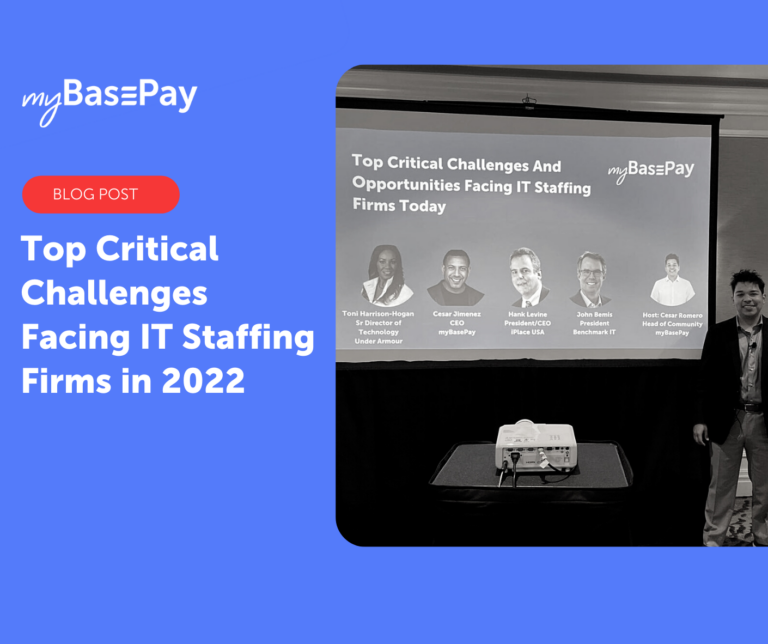How Nearshoring Saves Up to 70% in Workforce Costs?
Nearshoring: A Strategic Talent Solution
Nearshore outsourcing has become a hot topic, offering companies a way to access top talent at a competitive cost. It’s more than just a passing trend; nearshoring is transforming the contingent workforce and attracting significant attention from companies of all sizes.
The Numbers Tell the Story
Latin America is currently the most popular nearshore destination, and for good reasons. With a population exceeding 660 million and a collective GDP of $6 trillion (Deloitte), this region boasts a vast talent pool with immense potential. Companies that choose nearshore outsourcing in Latin America benefit from several advantages:
- Time Zone Advantages: Nearshore locations are typically within a 3-hour time difference, helping better communication and workflow.
- Expanded Talent Pool: LATAM has a large pool of qualified IT professionals, helping address talent shortages in the US. Countries like Costa Rica, Honduras, Argentina, and Colombia have thriving tech hubs.
- Cost Savings: While not as inexpensive as some offshore options, nearshore staffing in LATAM still offers significant cost savings compared to hiring domestically in the US. Companies can typically save 30-70% on salary costs.
- Language proficiency: Many LATAM professionals have strong English language skills, reducing communication barriers.
- Geographical proximity: LATAM is much closer to the US and Canada compared to traditional offshore locations, making travel for in-person meetings and collaboration more workable and cost-effective.
- Cultural Alignment: Latin American teams often share a closer cultural affinity with the US, leading to smoother communication and collaboration.
- High Educational Levels: Latin America boasts a highly skilled workforce, with Colombia ranking in the top 5% for technical expertise globally (WPR).
- Retention: LATAM professionals often earn good wages compared to local standards when working for US companies, leading to higher job satisfaction and retention.
Overall, nearshore IT staffing in LATAM offers a compelling middle ground between onshore and offshore options, providing many of the cost benefits of offshoring while minimizing challenges related to time zones, culture, and collaboration. For many US companies, it offers an attractive option for accessing talent and controlling costs while maintaining high-quality output and smooth operations.
Hiring Nearshore Resources: 3 Approaches
When it comes to building your nearshore team, there are three main approaches to consider:
- Establish a Foreign Entity: This traditional method offers the most control over the hiring process. You’ll set up a legal entity in your chosen nearshore country, giving you direct management of onboarding, payroll, and other HR functions. However, setting up a foreign entity can be complex and time-consuming. The upfront investment can be significant, and navigating local regulations can delay hiring by several months. This approach is best suited for companies with a long-term vision for nearshore expansion and the resources to handle the initial setup costs.
- Partner with an Employer of Record/Agent of Record (EOR): An EOR acts as your extension for global HR, handling the complexities of hiring a nearshore workforce while ensuring compliance with local employment laws. The EOR manages onboarding, payroll, and even crafts locally tailored benefits packages to attract top talent. By partnering with an EOR/AOR, you can bypass entity establishment and focus on your core business activities. This option is ideal for companies seeking flexibility and wanting to “test the waters” of the nearshore market before a full-fledged expansion.
- Hire Local Contractors: This approach allows you to access specialized skills for specific projects. Hiring nearshore contractors can save time and resources compared to hiring full-time employees. However, there’s a risk of misclassification. Over time, the line between contractor and employee can blur, especially if you provide work equipment or influence their work schedule. This can lead to fines, litigation, and reputational damage for your company. Carefully consider legalities and ensure proper classification before engaging nearshore contractors.
Choosing the Best Fit
Of course, the ideal hiring approach depends on your specific needs and goals. For a faster and more flexible solution, partnering with an EOR is a great choice. Below is a breakdown on why it’s the better approach.
Benefits of Using an EOR for Nearshore:
Utilizing an Employer of Record (EOR) streamlines your entry into the nearshore market by taking care of the heavy lifting. They handle complex local regulations, reducing your compliance burden and ensuring your business stays legal. This frees you up to focus on building your team, as the EOR takes care of the often-time lengthy legal and administrative processes. Additionally, EORs mitigate employer-related risks by managing payroll taxes and employee benefits. This allows you to scale your nearshore team up or down as needed with greater flexibility, as the EOR handles the logistics of onboarding and offboarding. In short, an EOR enables you to focus on your core business and removes all the employment liabilities/risks. So, you can receive all the advantages the nearshore model provides.
Conclusion
Nearshoring is here to stay, and it will only continue to enable the future of the contingent workforce. While alternative methods exist for international hiring, using an EOR offers the easiest and safest approach for most companies. An EOR simplifies compliance, reduces risk, and allows you to focus on building a successful nearshore team that contributes to your organization’s goals.
Have you considered a nearshore contingent workforce for your business? Let’s connect.






